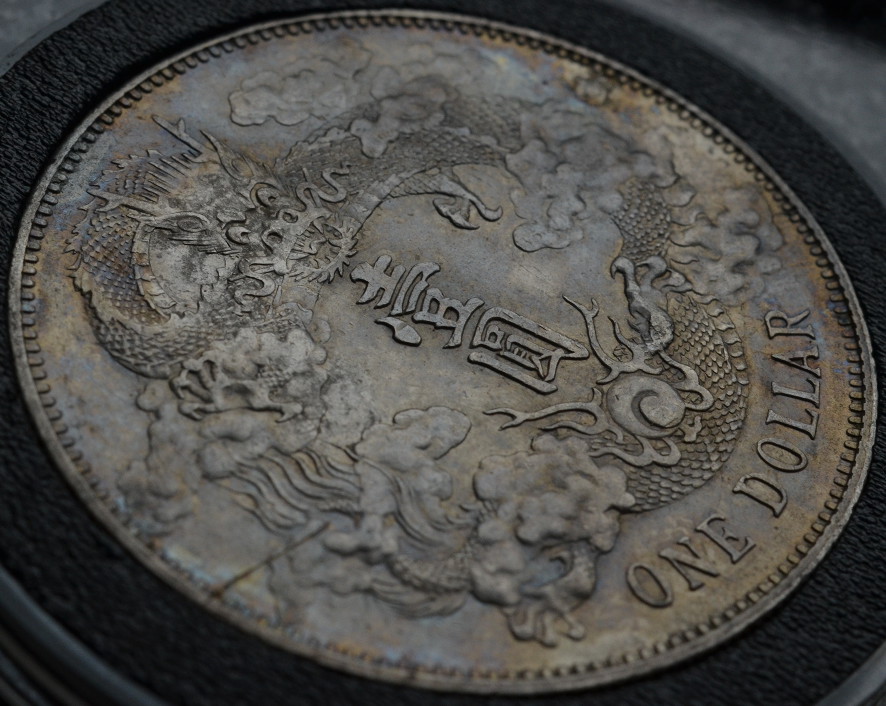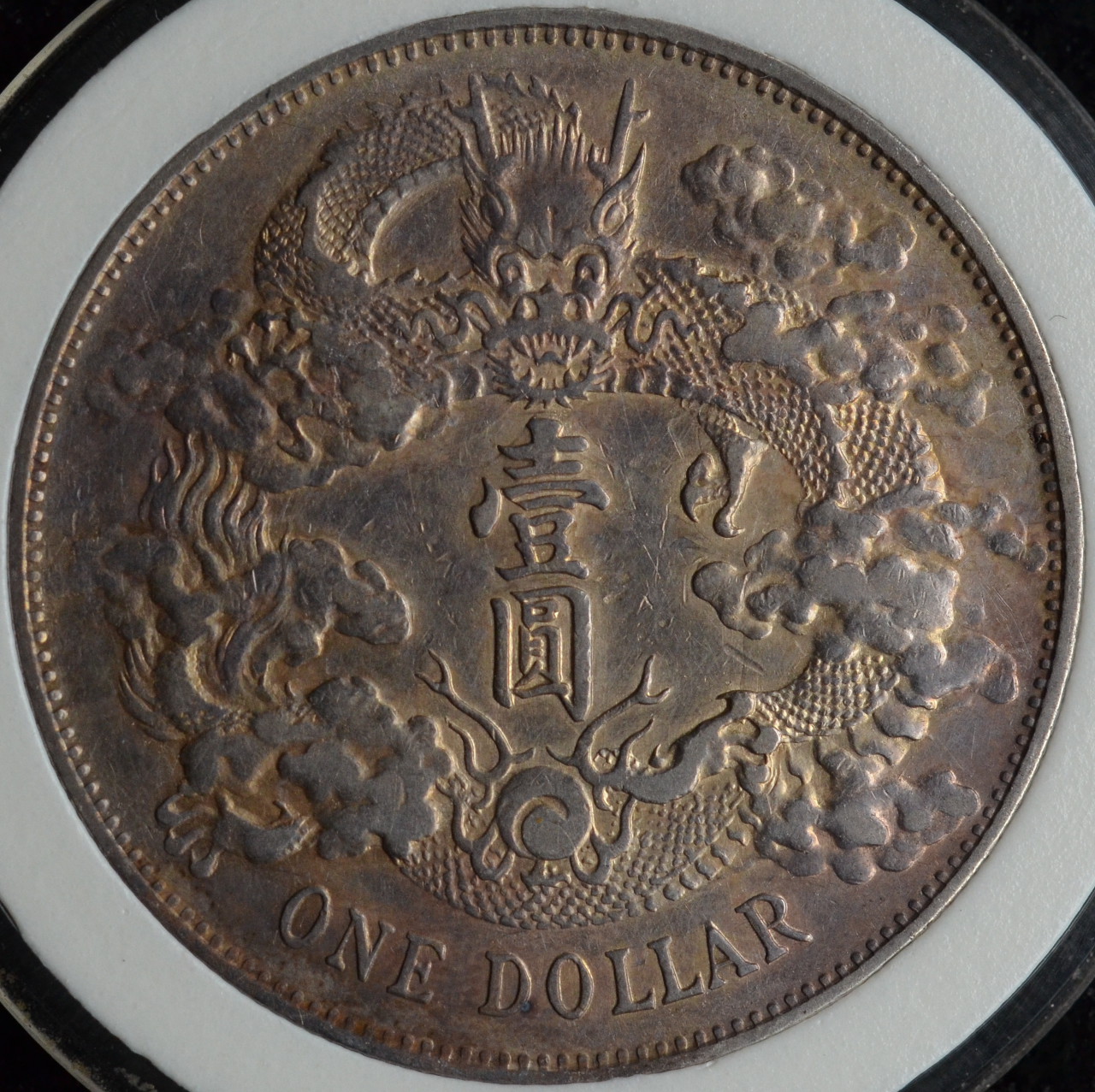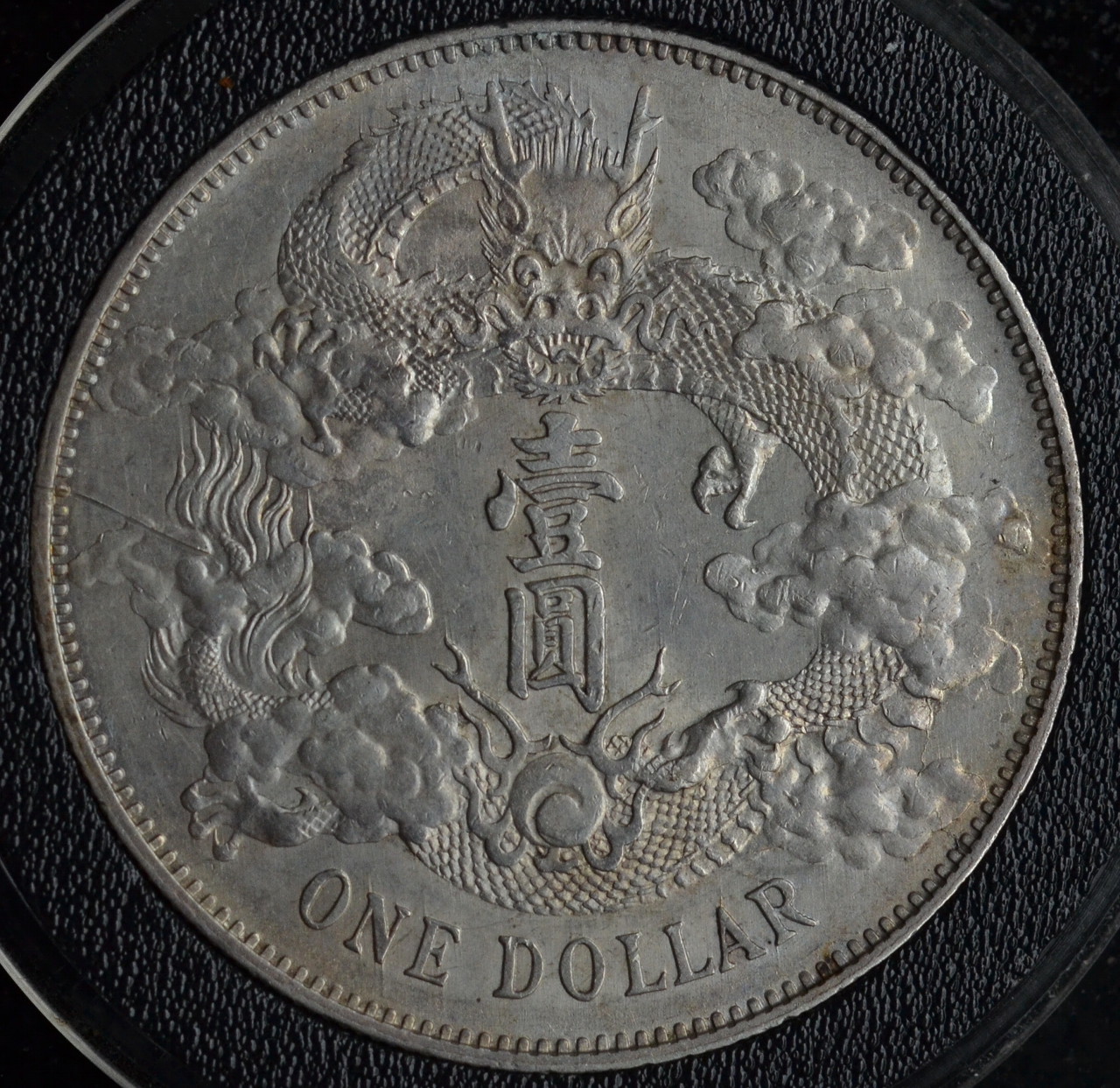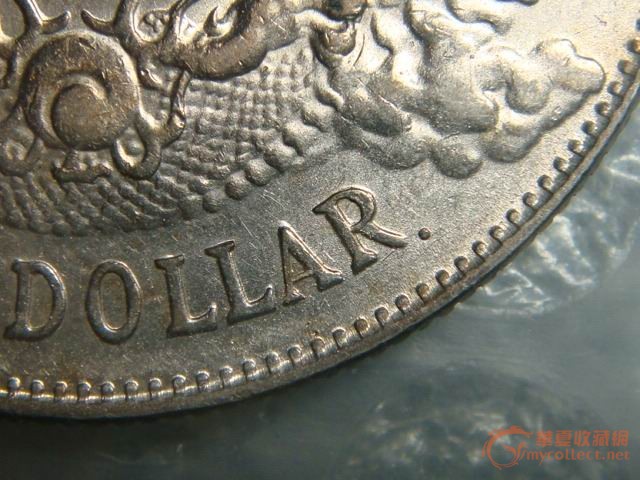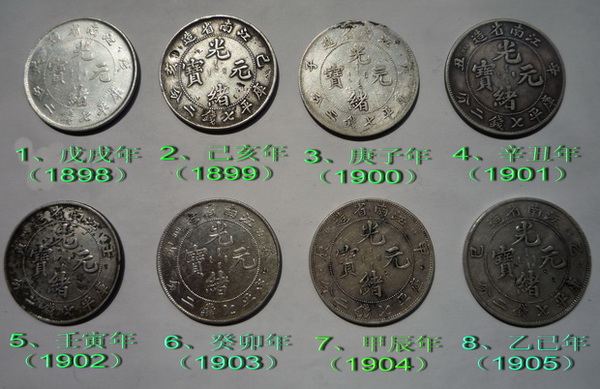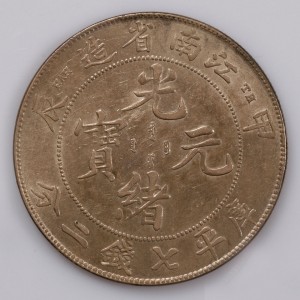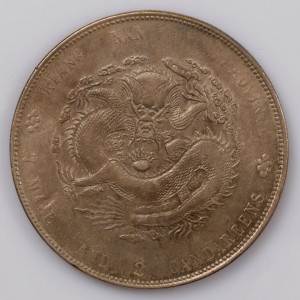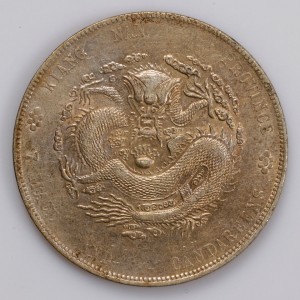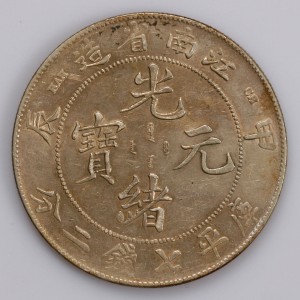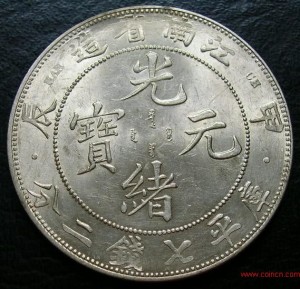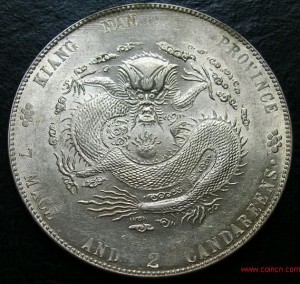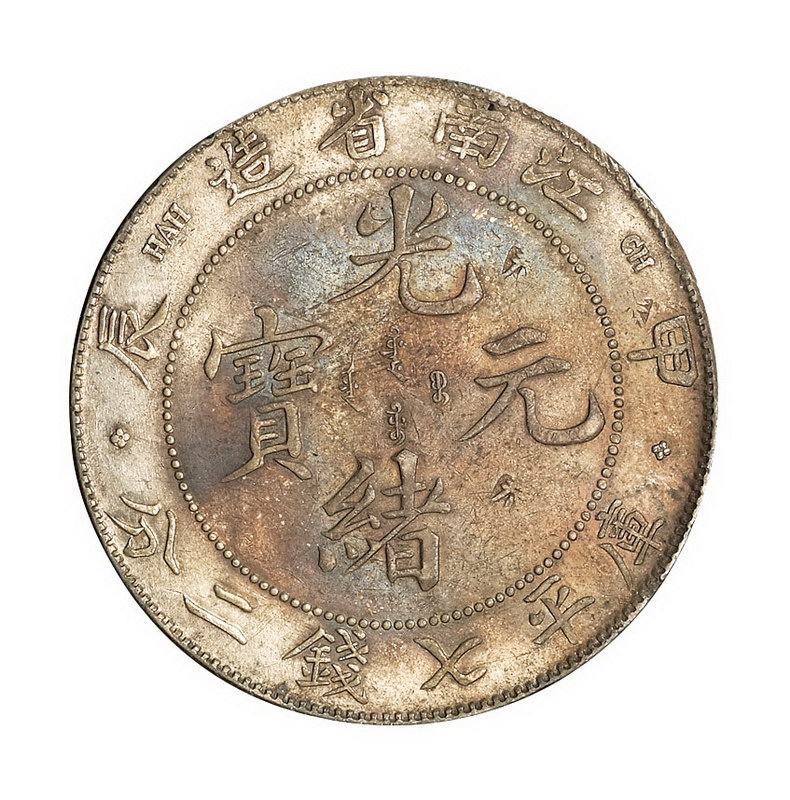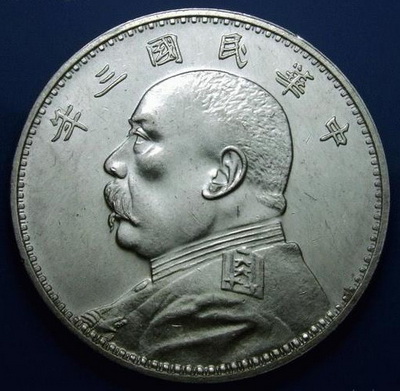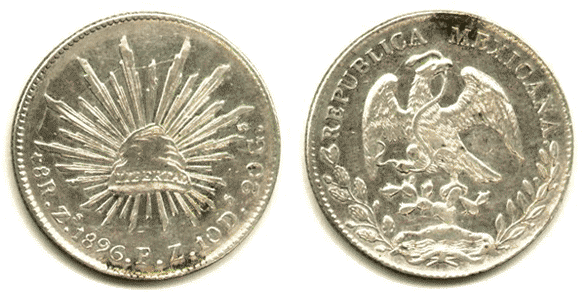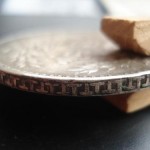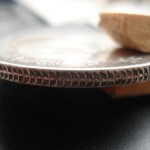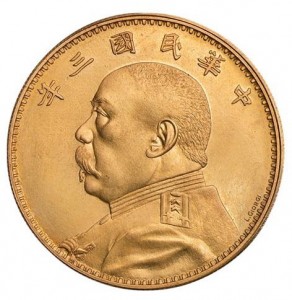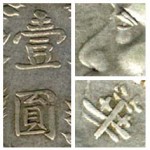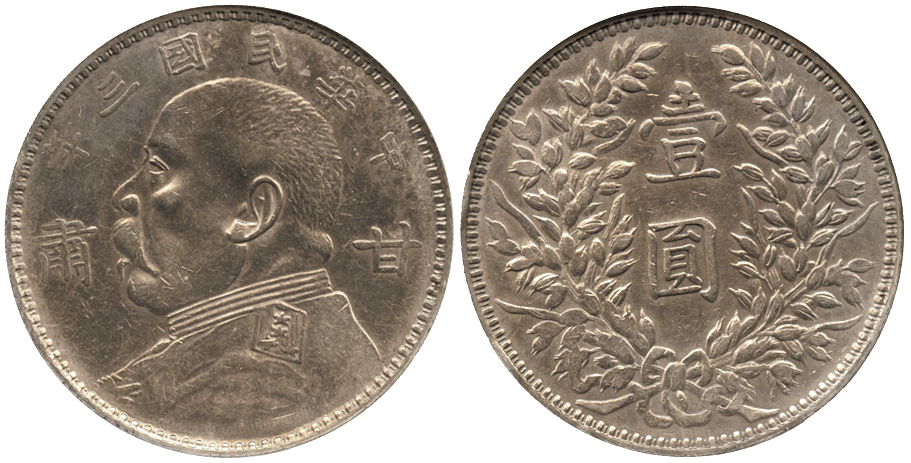Some readers have asked which dragon dollar is the most popular amongst collectors. The most famous chinese silver dollar from the late Qing era is most likely the Y31 silver dollar, colloquially referred to as “宣三” in China. It was minted in 1911 (3rd year of the rule of Xuan Tong) at the Central Mint in Tianjin. It was the last imperial coin issued before the regime was toppled by the Xinhai revolution. The design of this chinese silver dollar is considered by many collectors to be the most beautiful, and it is also the only imperial chinese coin bearing the “ONE DOLLAR” face value to have been circulated. While not rare by any measure, the Y31 dollar has seen its market value rise steeply in recent years due this popularity.
This dragon dollar was issued by the central authority, which means it had standardised weight, metal composition and design, but there exists nonetheless three die variations of this chinese coin.
The most commonly seen is called “浅版” in China, or “shallow strike version” (see below). Since it was struck with old dies, the details of the design are less clear in this version than in early ones. By looking carefully at the DOLLAR word on the reverse, one can see that the R was repaired by adding back a missing leg. It is labelled as “w/o Flame, w/o Dot” by PCGS:
The earliest version is called “深版“, or “deep strike version”. The details of this version are very sharp, the R in DOLLAR is still intact, and an additional spine which was lost to weak strike or die deterioration in subsequent versions is still visible at the tip of the tail of the dragon, across the cloud. While this version is only slightly scarcer than the 浅版, it is usually more expensive due to its popularity. This coin is labelled “Extra flame” by PCGS, due to the “additional” spine at the end of the tail of the dragon:
The last version is actually a restrike of the 浅版. In the years following the 1911 revolution, old dies were reused to issue new coins and avoid currency shortages. The already well worn dies of the 浅版 Y31 were briefly reused to mint the Y31.1 dollar, much scarcer than the earlier “official” issues. The only difference with the original dies is the addition of a dot after the word “DOLLAR“. Similar alterations were done to other revolutionary restrikes, like the 1904 Kiang Nan dollar with dots in the denomination.
Since the Y31.1 dollar is much more rare and expensive than other versions, many unscrupulous coin dealers or counterfeiters have tooled genuine dollars to add a silver dot, thus instantly doubling their profits. Most of these coins have been polished or cleaned first, though, to make the modification less obvious.
It is therefore advised to avoid buying cleaned or polished Y31.1 dollars. Genuine coins from the type “dot after dollar” (带点) were all made using the “w/o Flame, w/o Dot” 浅版 dies, so they have the same characteristics: fixed “R”, unclear details, and one spine less on the dragon tail. Uneven toning around the dot should be considered with extreme suspicion. A dot on a “Extra flame” dollar is a certain indication of tooling. Once again, be careful when buying chinese coins!
Kiangnan dollars were minted at the Nanking mint from 1897 to 1905. Early coins have a unique design and are quite scarce, but from 1899 on, the Nanking mint was one of the most prolific mint in China and the subsequent issues are common chinese coins. Some later years emissions have scarce variations or interesting varieties, though it may not be easy to immediately identify them for the casual collector, since the coins are all dated using the sexagenary cycle of the traditional chinese calendar.
A picture is worth a thousand words: the table below should make it very easy for anyone to identify the year of production of the various Kiangnan dollars.
Amongst them, the 1903 Gui Mao (癸卯) and the 1905 Yi Si (乙巳) coins are the scarcest and most valuable. In this article, I would like however to focus on the 1904 Jia Chen (甲辰) coin, which is more common but has an interesting history.
Starting from 1901, all the Kiangnan coins had some marks added next to the characters indicating the year. In the year of Xin Chou (辛丑), the initials of the British assayer H. A. Holmes, working for the Nanking mint, were apposed on the coins as a guarantee of their purity. Indeed, sloppy minting in the previous years raised concerns that people would start to distrust the coins and return to using the foreign currency circulating at the time. On the Gui Mao (癸卯) coins, a distinctive five pointed rosette was added as well.
In 1904 (Jia Chen (甲辰) year), two different marks were used in addition to the usual HAH initials: TH and CH.
According to the mint records, only one million coins with the TH mark were minted. It is generally supposed that “TH” are the initials of the die engraver, but his name has unfortunately been lost. Some have said that “TH” stood for the first two letters of the name of the auxiliary mint director (副厂长), Deng Ju (邓矩), but this seems unlikely. The Wade-Giles romanisation (in use at the time) of his name would be Teng Chü, not Theng.
While the meaning of the TH initials remains obscure, it is probable that CH does actually stand for the name of the new director of the mint, who took up his functions the same year. At the time, the direction of the mint changed frequently due to the fact it was a very lucrative – and thus, coveted – position. In April 1903, Shen Bang Xian (沈邦宪) was appointed director, then replaced in September of the same year by Pan Ru Jie (潘汝杰), himself succeeded in April 1904 by Zhang Qian Jie (张迁杰)… Zhang Qian Jie was in charge during the time the Jia Chen coin were minted, and the initials of his surname (romanised Chang at the time) match the CH mark.
If this is indeed the meaning of the CH mark, it becomes easier to put a timeline on the production of the different versions of this coin. The coins marked TH use the same design than the previous year, likely because the engraver didn’t had the time yet to complete the new dies. Some CH coins use the old dragon design too, but with a new reverse, as seen below.
Why the haste to engrave a new reverse and put it in production when the obverse wasn’t even completed? Well, it must have been tempting for the newly appointed director to seize the opportunity to immortalise his name on the new dies, knowing full well that his successor in six months would not be able to replace them before the next year… This scheme worked even better than he could have expected when the Jia Chen dies bearing his initials were reused from November 1911 to February 1912, after the fall of the last Emperor.
From this timeline, it is easier to determine which coins were minted during the Qing era and which coins are republican restrikes: coins bearing the TH marks, and early CH coins featuring the old dragon design, were both obviously made in 1904. For subsequent coins, things are somewhat less clear. Coins with the new dragon design and the CH initials have die differences too; and the most common of them is the addition of dots on the reverse.
As seen above, the new dragon design only differs subtly from its predecessor. The face of the dragon and the design of the flame to the left of the central fireball are the most distinctive differences; one can see that the weaker strike on the tail of the dragon (next to its right hindleg) has also been fixed.
The coin pictured above features another interesting difference: a dot has been added next to the denomination. This alteration was probably made on republican restrikes, like the variant of the 1911 imperial silver dollar (with a dot after “DOLLAR”) which was actually minted after the fall of the Manchu regime. Coins with dots on the reverse but without the dot after the denomination were thus quite possibly minted during the Qing era.
A scarcer variation exists, with rosettes instead of dots on the reverse. It is likely that this coin was minted in 1904 as well.
Of all these variations, the coins bearing the TH mark are the scarcest and the most expensive. The CH coins are all much less valuable, due to their relative abundance. This lead less than scrupulous coins dealers to scrub the C out of their common coin, and replace it with a T in an attempt to “upgrade” their coin and sell it for an higher price. Unfortunately for them, these initials is not the only difference between these coins. As we discussed before, some CH coins have the same dragon design than the TH coins, but not all. Even if the counterfeiter is careful and pick the right dragon pattern, the reverse of these coins has obvious differences for the connoisseur.
- The “legs” (3rd and 4th stroke) of the Yuan character, 元, are connected on a genuine TH
- The 甲 character points between the top and middle horizontal bars (1st and 2nd stroke) of the 元 character on a genuine TH coin
- The 甲 character points to the 2nd stroke of the 元 character on a CH coin
- the 辰 character is slightly “higher” (closer to HAH) on a genuine TH coin
As usual, always be careful and exerce your judgement when you buy an old chinese coin !
The Yuan Shi Kai silver dollar coin is one of the most commonly found Chinese silver dollar around the world, but paradoxically, there is few accurate information available about in English. Called 袁大头 in China (literaly “Yuan [Shi Kai] big head”), and “Fatman dollar” in the United States, this coin was designed to put an end to the chaotic state of the Chinese monetary system and further the political agenda of Yuan Shi Kai, who had just taken over the function of President of the newly born Republic of China.
Introduced for Christmas 1914, the Yuan Shi Kai silver dollar had a standardized purity (0.89000 silver) and weight (26.4000g, .7555 oz ASW). Like the previous central imperial issues, this new currency would have to compete against the chinese silver dollars already in circulation, foreign trade dollars, and resistance from provinces using primarily copper currency or paper money. The introduction of the Yuan Shi Kai dollar coincided with the withdrawal and melting of about 280 million dragon dollars. The remaining dragon dollars, whose fineness was not always up to the standard, could be exchanged free of charge for the new Yuan Shi Kai dollar in all Bank of China, Bank of Communications branches or official provincial banks.
These political measures helped the new currency to gain traction, but at the beginning of World War I, the Mexican dollar was still trading at a premium against chinese dollars, due to its use as a means of payment for exports. It is only after the War caused exports to plummet than the Yuan Shi Kai dollar was able to replace the Mexican dollar. The loss of the export markets also undermined the faith in the interprovincial paper money, which relied on external demand for local products, and caused the collapse of local copper currencies.
These economical factors contributed to the outstanding success of the Yuan Shi Kai dollar, which gradually penetrated even the most remote provinces of China. In 1924, a survey conducted by the Shanghai Bank found that of the estimated 960 million silver dollar in circulation in China, about 750 million were Yuan Shi Kai dollars.
Like the imperial dragon dollars before it, the Yuan Shi Kai dollar was minted in the Central Mint in Tianjin, and provincial mints were given official sets of dies. Due to its success, the “Fatman dollar” was minted during a longer time than any of its predecessor, and in much greater quantity, so the worn out dies eventually had to be retouched or re-engraved. This lead to a lot of dies varieties, some of which became very popular amongst coin collectors.
Scarce Die Variations: the 1914 Yuan Shi Kai Dollar (3rd Year of the Republic of China)
The 1914 Yuan Shih Kai dollar can be easily identified, even if you can not read Chinese, because it has only six characters on the obverse. All subsequent strikes have seven, due to the addition of the character “造” (made). This series offers some of the most interesting die differences.
The Central Mint in Tientsin issued some early pattern coins as a trial. Some of these coins have an ornamented edge, with a “T” like pattern (T字边), other have an edge similar to the one of the then popular Mexican dollar that this new currency sought to replace (鹰洋边, “Western Eagle” edge). These coins are the scarcest and most expensive.
Some of these trial coins also feature the signature of the italian engraver, L. Giorgi, who designed the coin. Most of the other die variations have been produced by provincial mints, and can usually be identified by looking at some details of the Yuan Shi Kai portrait. The design of the eyes and the 華 character (second starting from the right) are very different on the Kansu Mint die.
The coins issued by the Gansu Mint have a lower silver content than other Yuan Shi Kai dollar. They therefore circulated at a discount at the time, but ironically they are now more expensive than regular dollars due to their relative scarcity. The Gansu Mint also produced some coins with a custom die featuring the province name, which were quickly withdrawn by the government. This is now one of the most expensive versions of the Yuan Shi Kai dollar.
There is many more popular types amongst collectors, like the “O” die (O版), the “O die with triangular yuan character” (O版三角圆), or the “long leaves” dollar, all of which will be the object of another post…
